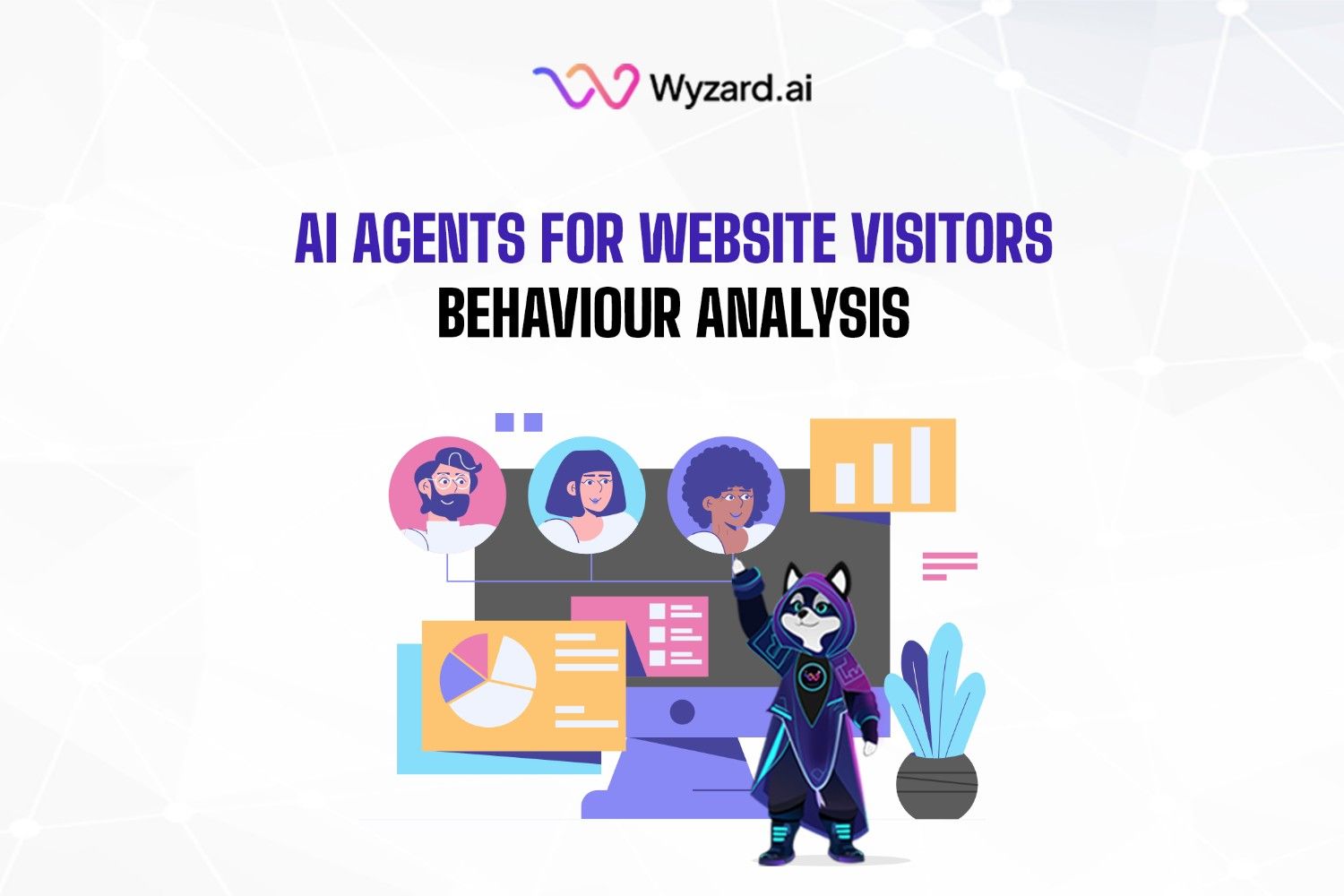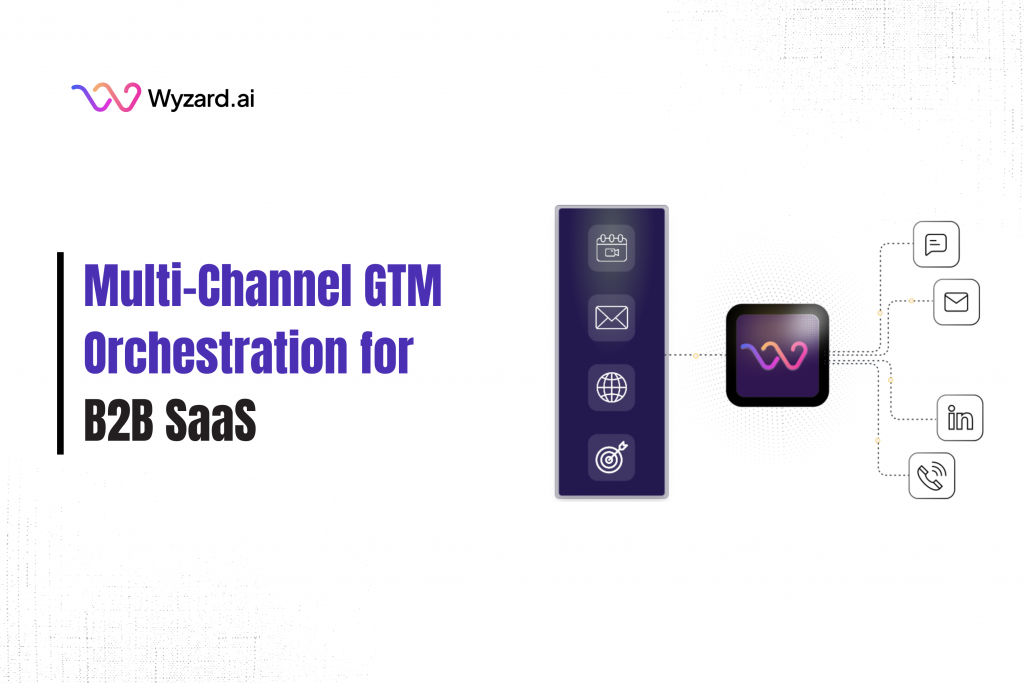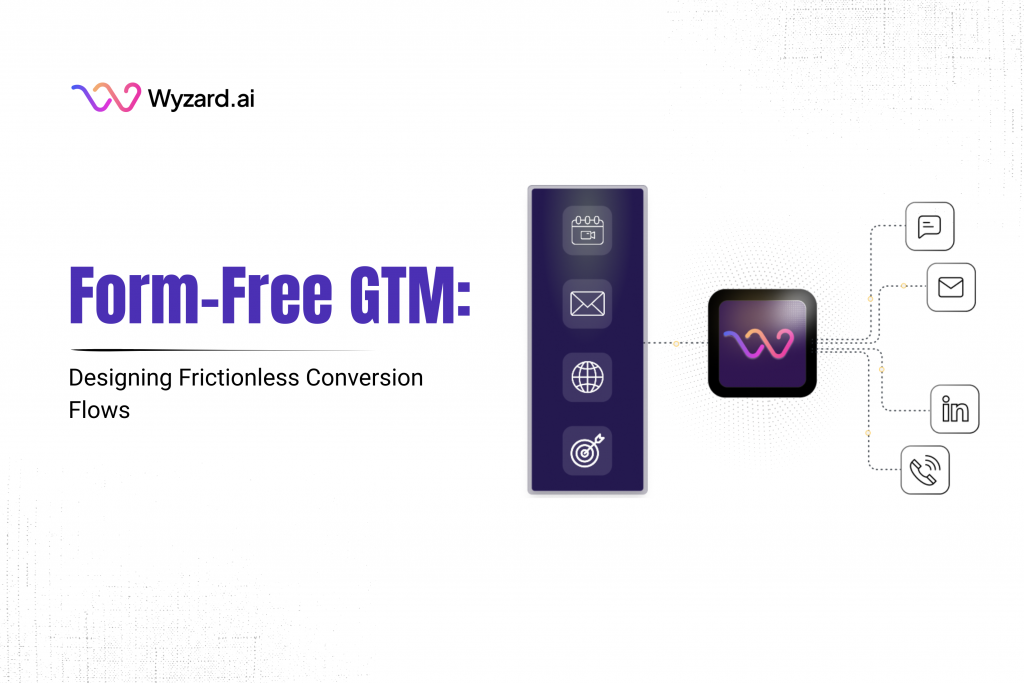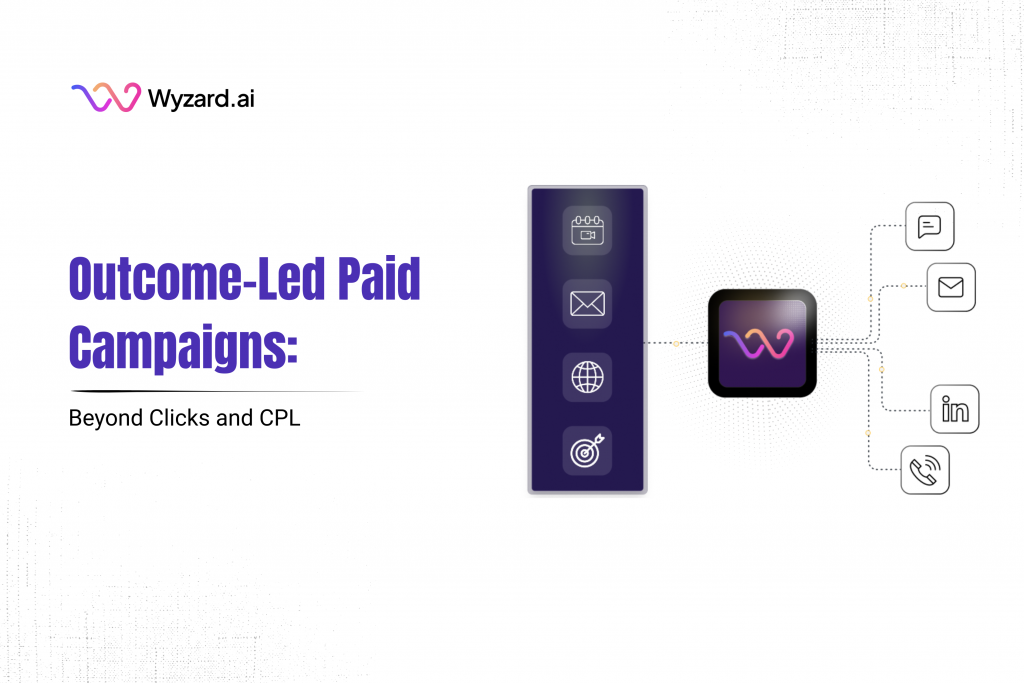If you run marketing or revenue for a B2B SaaS company, the goal is clear: turn GTM spend into ...

Subscribe Now
Every minute, potential buyers land on your website, browse through pages, and leave often without a trace. For B2B SaaS companies, this represents millions in lost pipeline. The challenge isn’t generating traffic; it’s understanding what visitors do, why they leave, and how to convert them before they disappear.
Traditional analytics tools show you what happened. AI agents for website visitor behavior analysis show you why it happened and what to do about it in real time.
What Is Website Visitor Behavior Analysis?
Website visitor behavior analysis examines how people interact with your site, which pages they visit, where they click, how long they stay, and where they exit. This goes beyond counting pageviews. It’s about understanding the digital body language of your prospects.
For growth-stage SaaS companies, this analysis answers critical questions: Are visitors finding your pricing page? Do they engage with product demos? Which blog posts drive conversions? Are high-intent accounts visiting multiple times without converting?
Traditional methods relied on manual review of heatmaps and session recordings. AI agents now automate this process, analyzing thousands of visitor sessions simultaneously to identify patterns human teams would miss.
How AI Agents Transform Website Visitor Behavior Tracking
AI agents don’t just collect data; they interpret it. These systems continuously monitor user activity across your site, identifying micro-patterns in navigation, engagement depth, and behavioral signals that indicate purchase intent.
Unlike traditional analytics that require manual setup and interpretation, AI agents automatically segment visitors based on behavior. They detect when someone browses your enterprise features five times in a week, downloads multiple case studies, or repeatedly visits your pricing page during business hours.
The technology works by processing multiple data streams: clickstream data, scroll depth, mouse movements, form interactions, and time-on-page metrics. Machine learning models then correlate these signals with conversion outcomes, building predictive models that improve with every visitor session.
Key Capabilities of AI-Powered Analysis:
- Real-time behavior tracking across all touchpoints
- Automatic visitor segmentation based on engagement patterns
- Predictive scoring that identifies high-intent prospects
- Anomaly detection that flags unusual navigation patterns
- Journey mapping that reveals common conversion paths
For marketing teams managing limited resources, this automation eliminates hours spent manually reviewing analytics dashboards while delivering more actionable intelligence.
Capturing Buyer Signals That Drive Revenue
Most website visitors never fill out a form. They research, compare, and evaluate, silently. AI agents solve this by connecting scattered behavioral signals into a coherent picture of buyer intent.
When someone from a target account visits your site three times in 48 hours, views your integration documentation, and checks your security page, they’re sending clear buying signals. AI agents capture these moments and trigger immediate action.
Wyzard.ai positions itself as “The Signal-to-Revenue AI” specifically to address this gap. The platform captures buyer signals instantly and orchestrates GTM actions across your tools and channels. Instead of waiting for prospects to raise their hand, your team engages while interest peaks.
This approach transforms website visitor behavior from passive observation into active revenue generation. Every browsing session becomes an opportunity to route the right lead to the right rep at the right moment.
| Traditional Analytics | AI-Powered Behavior Analysis |
| Pageview counts and bounce rates | Intent scoring based on behavioral patterns |
| Manual segmentation | Automatic visitor clustering |
| Delayed reporting | Real-time signal detection |
| Demographic data | Predictive engagement modeling |
| Generic insights | Account-specific intelligence |
Building an Effective Online Behavior Tracking System
Implementing AI agents for website visitor behavior analysis requires connecting multiple components: your website analytics, CRM, marketing automation platform, and lead intelligence tools.
The foundation starts with pixel-based tracking that captures granular visitor activity. This data flows into AI models that score engagement, predict conversion likelihood, and identify accounts matching your ideal customer profile.
Integration matters more than individual features. Integration matters more than individual features. When your tracking system connects with Wyzard.ai, visitor behavior automatically triggers personalized email sequences through Agentic Email, syncs with your CRM for seamless sales follow-ups, and enriches lead profiles using powerful integrations with tools like Factors.ai, Lusha, and Apollo, all without manual effort.
Implementation Steps:
- Deploy tracking across all key pages: homepage, pricing, product features, documentation, case studies
- Configure behavioral triggers: repeat visits, deep engagement, specific page sequences
- Set up automatic lead routing based on account fit and intent signals
- Connect signals to outreach tools for immediate engagement
- Establish feedback loops to refine scoring models
The goal isn’t collecting more data. It’s automating the connection between visitor interest and revenue-generating actions.
Practical Applications for B2B SaaS GTM Teams
Marketing teams use AI-powered behavior analysis to identify which content drives the pipeline. When certain blog posts consistently precede demo requests, you double down on similar topics. When visitors abandon pricing pages, you trigger targeted nurture sequences.
Sales teams benefit from knowing exactly which prospects are actively evaluating. Instead of cold calling, reps reach out when interest peaks, armed with intelligence about which features the prospect researched and which competitors they’re comparing.
Wyzard.ai’s agentic email ensures every message matches where prospects are in their journey. If someone spent 20 minutes reviewing your API documentation, they receive technical content, not generic marketing. If they check enterprise features for three days running, they get connected with an enterprise specialist.
Pipeline efficiency improves because qualification happens automatically. AI agents analyze behavior patterns to score leads, separating tire-kickers from serious buyers. This allows lean teams to focus energy on opportunities most likely to convert.
Common Use Cases:
- Account-based marketing teams tracking engagement from target accounts
- Product marketing measuring which feature pages drive conversions
- Demand generation, identifying which campaigns generate qualified traffic
- Sales development prioritizing outreach based on intent signals
- Customer success spotting expansion opportunities through product usage patterns
For companies without resources to hire additional SDRs or demand gen specialists, AI agents effectively scale lead qualification and engagement.
Measuring Impact: Beyond Vanity Metrics
Traditional website analytics focus on sessions, pageviews, and bounce rates, metrics that don’t directly connect to revenue. AI agents for website visitor behavior analysis shift focus to business outcomes.
Instead of celebrating traffic increases, you track qualified account visits. Rather than optimizing for time-on-site, you measure conversion path efficiency. The question changes from “How many visitors did we get?” to “How many buying signals did we capture and act on?”
Leading indicators worth tracking include: repeat visitor percentage from target accounts, average pages viewed by converted customers versus non-converters, time between first visit and conversion, and signal-to-meeting conversion rate.
Wyzard.ai’s approach emphasizes turning every buying moment into a revenue opportunity. This means measuring how quickly you engage after signals appear, what percentage of high-intent visitors receive personalized outreach, and ultimately, how website behavior analysis improves pipeline velocity.
Addressing Privacy and Data Quality Concerns
Effective website visitor behavior tracking balances intelligence gathering with privacy compliance. AI agents must operate within GDPR, CCPA, and other regulatory frameworks while still delivering actionable insights.
This means transparent data collection policies, proper consent mechanisms, and careful handling of personally identifiable information. The most sophisticated systems analyze behavior patterns without requiring personal data, using firmographic and behavioral signals instead.
Data quality matters as much as quantity. AI models trained on dirty data produce unreliable predictions. Regular data validation, deduplication, and enrichment ensure behavioral analysis drives accurate decisions rather than wasted effort on false positives.
Modern platforms address these challenges through built-in compliance features, automatic data cleaning, and verification processes that confirm signal accuracy before triggering outreach.
Getting Started With Behavioral Intelligence
Begin with clear objectives. Are you trying to improve lead qualification? Reduce time-to-conversion? Increase engagement from target accounts? Your goals determine which behavioral signals matter most.
Start tracking basic engagement patterns: pages visited, time spent, return frequency, and content interactions. Layer in intent signals: pricing page views, documentation access, case study downloads, and competitor comparison pages.
Connect this intelligence to your outreach tools. When Wyzard.ai detects high-intent behavior, it automatically adds prospects to relevant campaigns, enriches their profiles with behavioral data, and alerts sales teams through Slack notifications.
Iterate based on results. As AI models learn which behaviors correlate with conversions, scoring becomes more accurate and outreach more targeted. The system improves continuously without requiring manual tuning.
Quick Wins to Pursue:
- Identify your highest-converting pages and drive more traffic there
- Set up alerts when target accounts visit multiple times
- Create personalized nurture tracks based on content consumed
- Route hot leads to sales within minutes of signal detection
- Test different engagement triggers to optimize conversion rates
The key is starting with foundational tracking, then layering sophistication as you prove ROI.
The Competitive Advantage of Behavioral Intelligence
Companies that master website visitor behavior analysis gain asymmetric advantages. They engage prospects earlier, with more relevant messaging, at moments of peak interest. This produces higher conversion rates from the same traffic volume.
The market shift toward buyer-controlled journeys makes this capability essential. Modern B2B buyers research independently, avoiding sales contact until decisions are nearly made. Behavioral intelligence lets you participate in these hidden evaluation processes without being intrusive.
Wyzard.ai addresses this by connecting tools, capturing signals live, and triggering automated yet human-supervised follow-ups. Lost buyer intent due to scattered signals becomes impossible when every meaningful interaction triggers appropriate action.
The question isn’t whether to implement behavioral intelligence; it’s how quickly you can deploy it before competitors gain the same advantage. Start capturing buyer signals today with Wyzard.ai’s website visitor identification and turn every website visit into a revenue opportunity.
FAQs
AI-powered website visitor behavior analysis uses machine learning to automatically track, interpret, and act on how prospects interact with your site. Instead of just counting pageviews, AI agents identify patterns in navigation, engagement depth, and behavioral signals that indicate purchase intent. This technology segments visitors automatically, predicts conversion likelihood, and triggers personalized outreach based on real-time activity, eliminating manual analysis while delivering actionable intelligence for sales and marketing teams.
AI agents monitor clickstream data, scroll depth, mouse movements, time-on-page metrics, and content interactions to build behavioral profiles without requiring form submissions. They correlate these signals with firmographic data (company size, industry, revenue) and historical conversion patterns to score intent. When someone from a target account visits your pricing page multiple times, reviews technical documentation, and checks security features, the AI recognizes this as high-intent behavior, even if they never filled out a contact form.
Most B2B SaaS companies see measurable impact within 30-60 days of implementation. Initial quick wins include identifying which target accounts are actively researching your product, routing high-intent visitors to sales teams within minutes of signal detection, and automating lead qualification to free up SDR capacity. The system improves continuously as AI models learn which behavioral patterns correlate with conversions, producing increasingly accurate intent scoring and more efficient pipeline generation over time.
Traditional analytics show what happened after the fact, requiring manual interpretation and delayed action. AI agents operate in real time, automatically identifying which visitors match your ideal customer profile, scoring their purchase intent based on behavior patterns, and triggering immediate engagement through connected tools. They process thousands of visitor sessions simultaneously to detect patterns human analysts would miss, segment audiences automatically, and predict which prospects will convert, transforming passive data collection into active revenue generation.
Wyzard.ai connects scattered behavioral signals across your entire tech stack, website activity, email engagement, content downloads, and product interactions into a unified view of buyer intent. When prospects show high-intent behavior like repeated visits to enterprise features or multiple pricing page views, Wyzard.ai automatically triggers personalized outreach through Agentic Email, alerts sales teams via Slack, and enriches CRM records with behavioral intelligence. This orchestration ensures every buying signal converts into immediate, relevant action rather than getting lost in disconnected systems.
Other blogs
The latest industry news, interviews, technologies, and resources.
Form-Free GTM: Designing Frictionless Conversion Flows
A visitor lands on your pricing page. They are ready to talk, not to wrestle with a 12-field form. ...

December 8, 2025
Outcome-Led Paid Campaigns: Beyond Clicks and CPL
You put serious money into paid media. Dashboards show strong CTR and healthy CPL. The next slide hits and ...

 We’ve secured funding to power Signal-to-Revenue AI to GTM teams globally. →
We’ve secured funding to power Signal-to-Revenue AI to GTM teams globally. →


